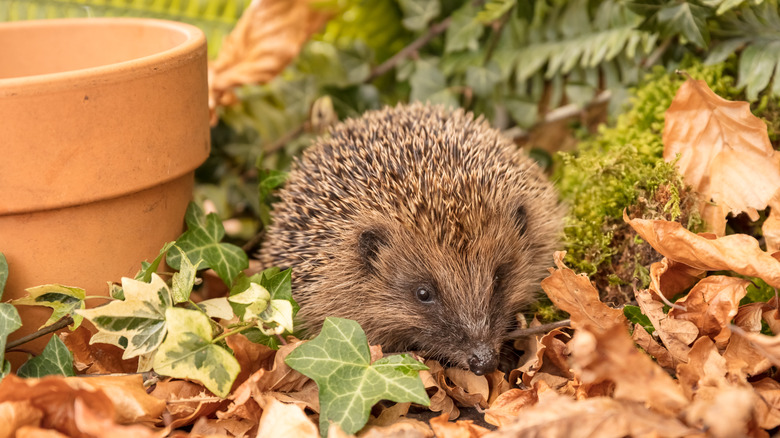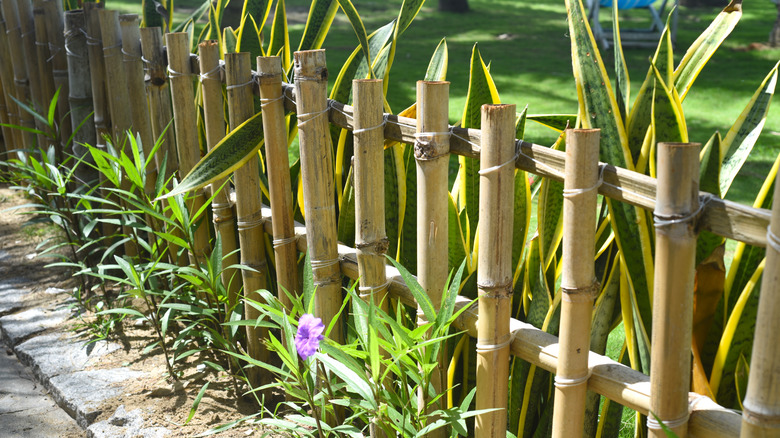How To Create A Garden Fence That Welcomes And Protects Wildlife
Everyone wants to protect their homes and property, and fences are often used to do just that. A fence can serve as a visual property line, keeping out people who don't belong there. Of course, we want to keep our pets and children safe, as well as our plants and vegetation. However, though we often look at fences as a way to keep things out, we also don't want to hurt any wildlife that roam about. One way to protect and even welcome wildlife onto your property is by creating a wildlife-friendly fence. You want to balance accessibility and safety for wildlife with your desire for a protected garden space. With a few practical steps, it can be relatively easy to design, and you will generally want to create a low fence with widely spaced slats and an opening on the bottom.
Though garden fences serve their purpose, choosing to welcome wildlife while also protecting our garden has benefits all around. Of course, keeping nearby animals safe from harm is a prime concern, and when you do, your garden will reap the rewards. Allowing wildlife to engage in your garden can create a biodiverse ecosystem where animals, insects, and vegetation can thrive. This helps bring more pollinators into your garden. From a practical standpoint, a wildlife-friendly fence can help prevent animals from destroying a fence they otherwise couldn't get into or pass by so you will save time, money, and energy in the long run.
Focus on fence height
When designing your wildlife-friendly fence, think low and open since taller fences can act as barriers, isolating beneficial wildlife. Aim for a height of 2 to 3 feet. This allows smaller animals like hedgehogs, frogs, rabbits, and even birds that nest on the ground, like chickens, safe access through crawl spaces at the bottom. Hedgehogs consume beetles and worms that harm plants, and frogs and toads are natural pest controllers. As a bonus, this also encourages seed dispersal within your garden.
Barriers over 4 feet tall are responsible for 70% of wildlife fatalities due to fences, another reason you should also consider incorporating jump zones into your fence design if you have a lot of land. This could involve leaving sections with wider gaps or even installing small ramps at regular intervals. By allowing controlled access, you avoid frustrated animals attempting to jump the fence, which could potentially damage it or lead to them injuring themselves. You ideally want to incorporate both low fences and jump zones to accommodate big and small animals as well as young and adults. It's important not to build fences on slopes or near water sources so animals can run freely and access ponds and water when needed.
Make sure fence slats are wide enough
Some of the best fence options for your backyard include wood, wire, and bamboo. When choosing your fence design, ensure there is enough space between slats to prevent animals from getting stuck. A safe rule of thumb is to maintain at least a 3-inch gap to prevent entrapment. This allows smaller animals to navigate freely while still deterring larger intruders. Leave at least 12 inches between the top two wires to keep bigger animals safe when jumping.
Avoid fence materials with sharp edges or gaps that could trap or injure animals. Barbed wire and chain links might provide security, but they pose a real danger to wildlife. Along the same lines, if you have any broken parts of your fence, fix them promptly, because jumping animals can get seriously injured by broken metal pieces or any areas that are sharp or pointy. If you'd like to help wildlife in your garden even more, you can plant a diverse selection of plants along the fence line. Include a variety of flowering plants and fruiting shrubs. This offers both food and shelter for pollinators and small animals.


